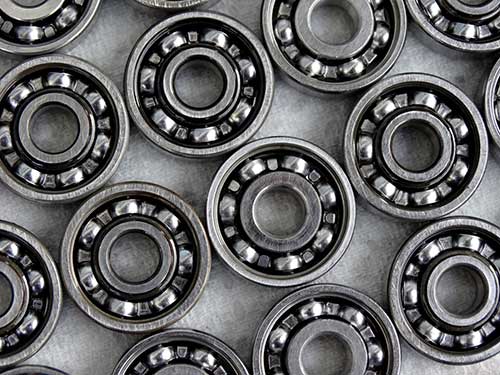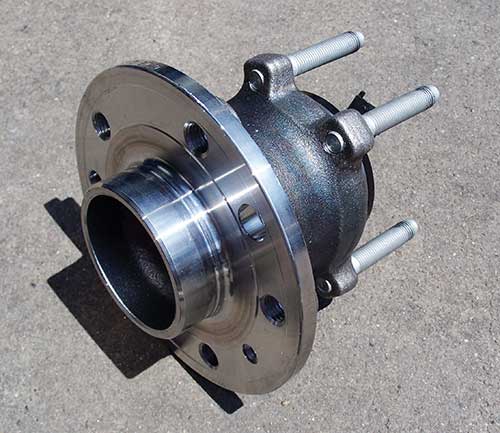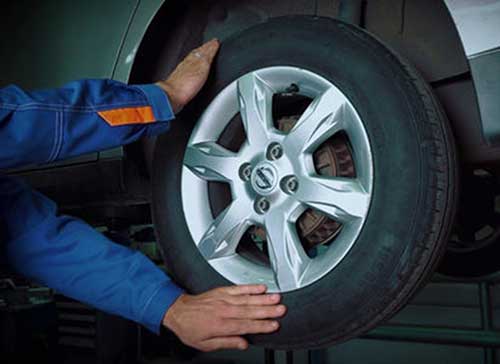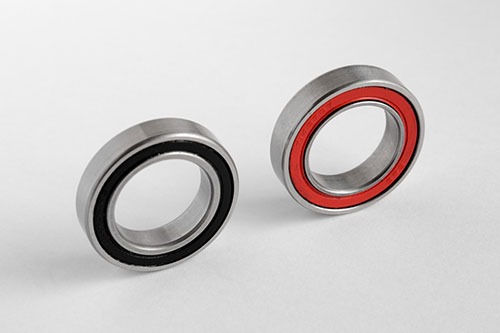The wheel bearing has been and remains the constant suspension element of any car. What is it, how is it checked and what are the reasons for its wear? The answers to these and many other questions can be found in this article.
Contents
What is a wheel bearing?
The wheel bearing is used to ensure the uniform rotation of the car’s wheels. Thus, it connects the car’s axle and the hub, to which the wheel is mounted. It consists of metal rings, between which are pressed conical elements. These are separated from the housing by a rubber insulator. The hub connects the wheel to the rest of the car, and the bearing ensures as little friction as possible for the wheel.

Like any bearing, it has many balls inside lubricated all the time. Over time, the lubricating oil loses its qualities and the balls will begin to rub against each other. Then the bearing has a very little lifespan.
Traditionally, two types of wheel bearings are distinguished – ball angular contact and roller conic. Since the middle of the last century, single-row bearings have been replaced by better bearings.
Wheel bearings are subject to extreme loads: high temperatures, various environmental influences, and also, as a result of shocks for example when a wheel hits a pothole, due to driving style, brakes, and steering. The wheel should rotate smoothly, with acceptable noise and minimal friction.

The wheel bearing performs the following functions:
- provides unimpeded rotation of the hub itself on the axis with a minimum expenditure of friction;
- connects the hub, with an axis or with a rotary cam and makes its centering on the axis
- makes a distribution of forces, both radial and lateral, torque, received from the wheel to the axis and suspension of the car, as well as from the suspension to the wheel;
- relieves the load from the axle shaft of the drive axle, transferring it to the bridge beam.
A wheel bearing is an essential car part. Without it, the wheel would not turn. It is experiencing really high loads, and therefore must be made of wear-resistant high-quality materials. However, in time, traveling a lot of miles or simply because of the improper use of the car, this part can fail. It is mandatory to change it. Otherwise, you can provoke a big accident.
Main symptoms of a failing wheel bearing
- When a wheel bearing is bad there will be a strong hum, both inside the car cabin, and on the outside as well. Being in the car, it is difficult to determine which wheel has that humming noise.
- With the strong wear of the bearing, the steering wheel vibration will be noticeable. When there is a lot of wear, the bearing bed is broken, the spherical elements begin to walk around the bearing circumference.
- The car will tend to go in the direction in which the defective bearing is. A bad bearing will always get worse fast, and, because of this, the car begins to pull left or right.
How to tell if a wheel bearing is bad?
There are several ways to do this.
Checking the wheel bearing without removing the wheel
As described above, this method involves checking the condition of a bearing without removing it. It is not even necessary to use specialized equipment.
How is the wheel bearing checked here? It is necessary to accelerate the car to 70-80 km / h (44 – 50 mph) and put the gear shifter in the neutral position. Then you need to listen carefully to the sound of the suspension. It is important to choose the most uniform section of the road so that the movement of the suspension is minimal. If you hear a sound that usually sounds like a hum, it indicates a malfunction of the wheel bearing.
How to check the rear and front wheel bearing?
You can lift the car with an elevator, then with your hands grab the top and bottom of the tire and move it slightly horizontally or vertically. If you notice that the wheel is not stiff and has a gap, the wheel bearing is most likely damaged. Careful! Rear wheels are allowed a minimum loose, quite small. On the front deck, this is not allowed at all, the wheel must be very stiff.

If you can’t use the elevator, no problem. Use the jack. It will take a little longer. But these are not all methods of checking a bearing.
Check the wheel bearing by using the steering wheel
The advantage of this method is that we do not need to look for a long way and accelerate the car to high speeds. But the uniformity of coverage is also important. So how this method helps to check the wheel bearing? We accelerate the car up to 20-30 km / h and start to suddenly turn the steering wheel to the left and to the right.
This way we check how much the car body is waddling. The skid must increase if the wheel bearing is bad. All this will be accompanied by a strong characteristic noise. At turns, it is sometimes amplified.
Likewise, we can determine which side is faulty. When turning to the right, the pressure is towards the left bearing (because the body is moving in the opposite direction). But to find out if it is a rear element or a front one, it is possible only on an elevator.
When buying a new bearing, it is important to check if it has lubrication. Usually, dishonest producers do not report it at the right level. Thus, the element is constantly subjected to pressure and failures.
How long does a wheel bearing last?
The lifespan of the wheel bearing is associated with a large number of factors and, therefore, is in a fairly wide range: from 50.000 km (31.000 miles) to 150.000 km (93.000 miles). First of all, these are the operating conditions and the car make and model.
Finally, we have explained to you how to check the bearing if it works correctly or not. Of course, all problems are accompanied by a characteristic noise. It is important to notice it when it has not broken down at all. Traveling with a bad bearing is extremely dangerous. Especially if it’s an element of the front axle.
How long can you drive with a bad wheel bearing?
The first sign of a bag bearing is the humming noise. If the bearing is already well worn, then vibration should appear, especially in the steering wheel. This suggests that the spherical elements have already worn out and you need to change the wheel bearing fast.
All the pressure that the wheel has in contact with the road is supported by the hub bearing. Therefore, manufacturers make this part of materials particularly durable. But there is a limit to everything: driving the car a lot or for other reasons, the wheel bearing wears out.
Causes of premature wear of the wheel bearing
- Too many miles. There is nothing supernatural: long-term driving leads to wear on any part, and hub bearing is no exception.
- Loss of lubricant. It is placed inside the product during the manufacturing phase, and then the bearing is tightly closed with a special rubber or plastic cover. If this housing is destroyed, the lubricant leaks and starts to run on “dry”, which leads to its destruction.
- Constant driving on bumps, potholes, and an aggressive driving style.
- Incorrect installation. If the installation of this part is done incorrectly, after about 2000 kilometers (1000 miles) or even earlier, you will be convinced that the hub bearing is defective and the characteristic noise is heard.
- Lubrication is not recommended by car manufacturers. The hub operates in high-temperature mode, so for normal operation, you need a proper composition. Another type of lubricant can overheat, melt and leak, leaving the bearing dry.
- Installing a lower quality or faulty wheel bearing.
- Abnormal operation of the brakes causes them to overheat. As a result, excess heat is transferred to the hub bearing.
To be honest, the bearing is a very strong part of the hub. And to destroy it, you need to try! Most likely, all kinds of racks, rubber bushings, and other mounted parts will fail.

Repairing and replacing the wheel bearing
There are frequent cases when a bearing has already failed at a certain mileage. An option is to remove all existing grease and apply a new one, purchased separately. Grease specific to this operation is now being sold. They are resistant to leaks and do not change their properties at high temperatures.
However, it is best that you buy a new wheel bearing, applying a new grease is not recommended.
It’s very difficult to change the wheel bearing yourself. Special equipment is needed, as well as knowledge of the car’s suspension. When the wheel bearing fails, you need to completely change the wheel hub.
Conclusion
The initial stage of wear is characterized by the appearance of a noise at a speed of 40-50 km / h (24 – 31 mph), the sound amplifies as you accelerate. In the next step, a blow is added to this noise, then a crack indicates the destruction of the separator.
At the end, the wheel jams and even turns at a different angle to the direction of movement. All this becomes a danger not only for the driver and passengers but also for nearby pedestrians.
